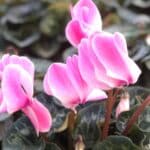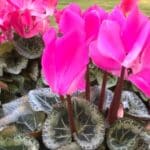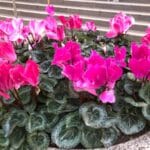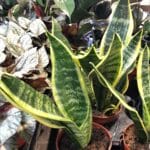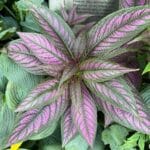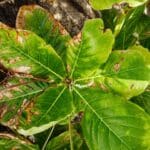Everyone who is interested in plants knows the name Anthurium, regardless if you are a beginner. Anthuriums are one of the most famous landscape plants because of their exquisite qualities and wide range of varieties.
They are perennial plants coming from the Araceae family. Under the Anthurium genus are more than 800 species and more than a thousand cultivars. This vast selection of anthuriums will surely have at least one species or cultivar that would fit all your criteria.
Different species of anthuriums can be found in different parts of the world, but they are mostly found in tropical and subtropical regions. As a cult fave of a lot of growers, this plant is often planted as a houseplant. Although, some thrive in an outdoor setup.
People love unique patterns in plants and there are a lot of types of anthurium flower that you can pick on. They often differ in leaf shape, color, and accent of leaf venation, flowers, and fruits. Although some need special attention, this article will discuss their most common characteristics.
Plant Facts
| Scientific name | Anthurium sp. |
| Common names | Anthurium, Flamingo flower, Tail flower, Flamingo Lily, Laceleaf, Boy flower |
| Family | Aracea |
| Plant Type | Houseplant |
| Height and Width | 1-6 ft. tall (indoors), 1-6 ft. wide (indoors) |
| Origin | Tropical regions |
| Flower colors | Pink, Red, White, Cream, Green, Light Green, Purple |
| Foliage color | Light green to dark green |
| Sun Exposure | Full sun, Partial Shade, Bright indirect sunlight |
| Soil Type & pH | Well-drained, Loose soil, Moist |
| Special features | Perfect in containers, Toxic to humans, Unique flower with its spathe and spadix |
How to Grow Anthuriums
The best time to grow these flowering plants is during spring or summer. Also, putting them in containers is the best way to go for house plants such as anthuriums. Depending on the growth habit of the species or cultivar you like, the container and location would vary. For example, the Anthurium andraeanum has an erect stature and is grown in the usual plant pots. On the other hand, types that have strap-like foliage, such as A. vittarifolium and A. pendulifolium, are grown in hanging pots.
Some of the things you need to consider when choosing the right pot are your plant’s growth habits, leaf and flower structure, and sensitivity. Along with choosing the right container is choosing where to place your plant. Most types of Anthurium prefer a humid and bright location with good airflow, which is why they are often placed near windows.
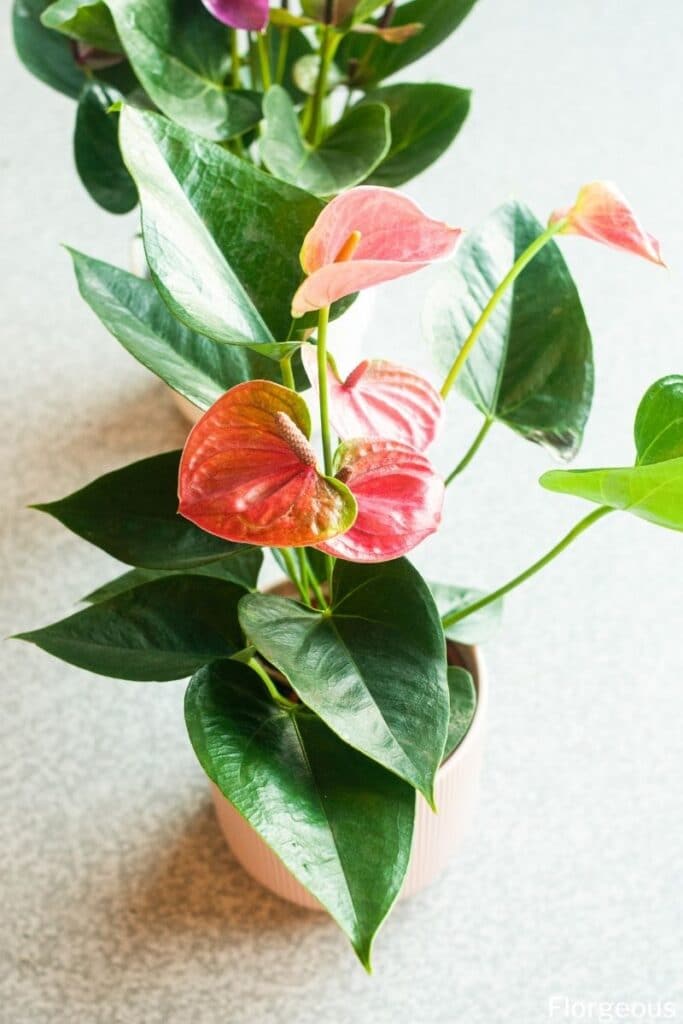
Propagation
The easiest and most efficient way to propagate anthuriums is by division. Through time, they tend to grow and produce new plants especially when all their growing requirements are met.
By this time, overcrowding may be observed. A sign of overcrowding is having a denser plant but slower growth. Overcrowding sign shows that it is time to divide your plant.
In dividing, you will need a knife, garden trowel, pot, and potting mix. The first thing to do is to loosen up the soil and uproot the clumped plant.
Lightly shake the root part to have a clearer view. Select the plants to be separated and carefully detach them. Using a knife would be easier but remember to avoid cutting the major Anthurium roots. Lastly, plant anthurium in its new pot with the potting mix.
Give the new plant the same care. If the repotting is successful, these flamingo flowers may be observed after a year. An additional tip is to repot annually, preferably during spring.
Soil
Knowing your plant’s origins is the best way to determine which type of soil they need. For anthuriums, they are mainly grown in tropical regions with dry and loose soil. Some types are even epiphytic, meaning they survive by clinging on to trees.
With this being said, the best growing media for anthuriums are loam to sandy loam soils. Some add mulch and sphagnum moss to improve the soil texture. If you are new to the gardening scene, there are readily available planting mixes in the market. Remember to get a mix that has good drainage, is disease-free, and is loose. If you have available soil, performing soil tests will help you know what to improve. Also, remember to pasteurize the soil to get rid of soil-borne pathogens.
Pruning
Pruning is only done as needed. It is performed with the use of sharp pruning shears to remove dead and damaged plant parts. This act is beneficial for the health of the plant and gives off better aesthetics.
Repotting and Transplanting
Repotting and transplanting have the same steps as propagating but without dividing. If your anthurium plant has already become too big for its pot, choose a pot one size bigger than the old one. If it is your first time to repot, here are some steps you can follow:
- Using a garden trowel, loosen the soil on the edges of the pot. Keep the soil in the middle intact.
- Fill ⅖ of the pot with soil or growing mix.
- Tilt the pot and guide the plant as you remove the plant from its old pot. This part can be messy especially when the soil is loose. Try to keep as much soil root bound as possible.
- Plant the anthurium on its new pot and fill the spaces with soil or mix.
- Using your fingers, lightly press on the soil around 1.5 inches away from the base. Do not press too hard to avoid compacting the soil.
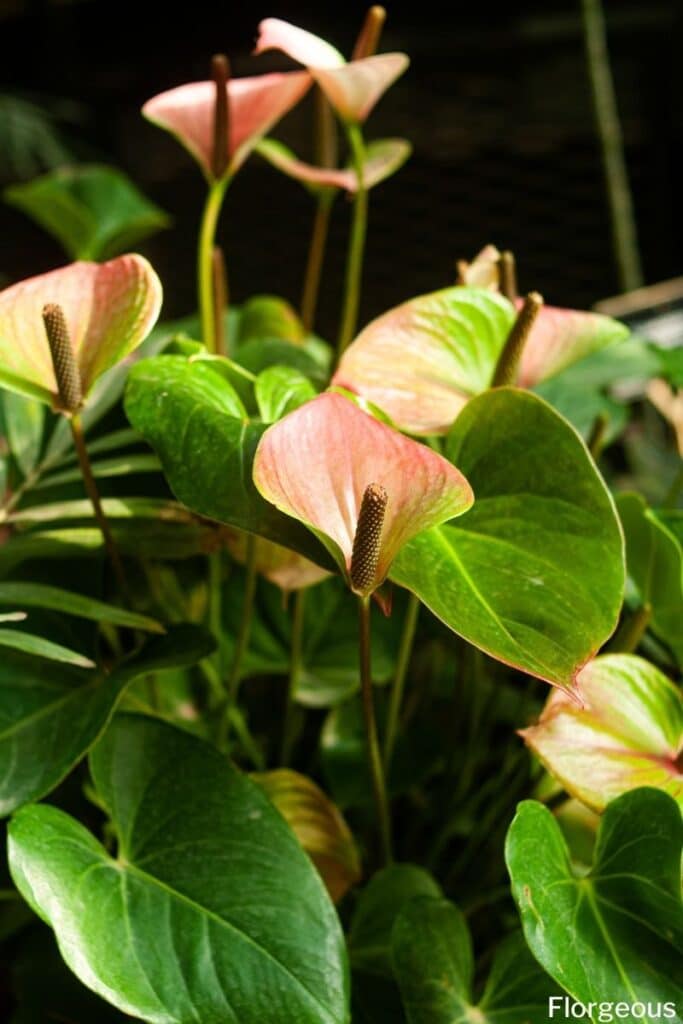
How to Care for Anthurium Plants
Follow our Anthurium care guide to grow healthy plants:
Water
They like humid but not soggy soil, with a small drying time between waterings to prevent root rot.
Water until liquid runs through the drainage hole at the bottom of the pot, then dump any excess water in the saucer.
Do the finger test to know when it is time to water. Stick your finger down the soil for up to 6 cm deep. If that part of the soil is dry, you may water your plant again.
Sunlight
They love basking in bright indirect light but not too much direct sunlight. Some growers put their anthuriums near windows to get that bright light. On the other hand, inadequate light exposure will lead to slower growth of the plant.
Temperature and Humidity
Since they are houseplants, the ideal daytime temperature for them is around 21 to 27 degrees Celsius. At night, it prefers a colder temperature of up to less than 10 degrees Celsius. The common types can thrive in 60-80% humidity but there are rare types that prefer up to 90% humidity. In general, they love places with high humidity.
Fertilizer
There are no special fertilizers needed for this plant but regular application of complete fertilizer will be beneficial. As houseplants, they are bound to have fewer nutrients in their soil making it deplete faster through time.
To avoid malnutrition, apply diluted complete fertilizer monthly. The mixture should have one part fertilizer and four parts water. Also, time the application during the actively growing stages of the plant which is usually around spring and summer with warm temperatures.
Pest and diseases
Anthuriums are commonly affected by fungal and bacterial diseases, which are commonly seen in masse. Here are the most common diseases:
Black Nose Disease
Brought upon by the fungus, Colletotrichum gloeosporioides, this disease causes the blackening of the spadix and it can progress to rotting of the whole spadix. Also, leaves and stems may be affected during serious infestations. It is prominent in humid areas wherein the fungus gets inside the plant’s system through cuts and damages.
Rhizoctonia Root Rot
Rhizoctonia solani is the causative organism of this disease, which lives in soils and could survive there for years despite the lack of a host. Your plant might have this if it exhibits symptoms such as early death of younger stems or mushy stems.
Phytophthora and Pythium
The fungal pathogens for this disease are the Phytophthora nicotianae var. parasitica and Pythium splendens. Common symptoms of this disease include yellowing leaves and root damage. If it gets worse, black lesions on the leaves may be seen. Also, you will observe that the plant does not grow despite giving all the necessary growing requirements.
Bacterial Wilt
Caused by the bacteria, Ralstonia solanacearum, this disease makes the anthurium’s foliage yellow during its early stages. As the disease progresses, it destroys the plant’s vascular system making the stems brown and mushy. To know if it’s caused by a bacteria, cut an infected part and dip it in a clear glass filled with water. Observe closely to see bacterial ooze.
Bacterial Blight
Xanthomonas axonopodis pv. dieffenbachiae is this disease’s causal organism. It makes the plant’s foliage turn yellow and dull. Also, there are noticeable mushy brown lesions on different parts of the leaf. This disease occurs in moist environments, especially if there are stagnant droplets of water on the surface of the plant.
Control for Anthurium Diseases
Since the mentioned diseases are spread in a moist environment, remember to keep the plant surfaces dry and avoid overwatering. Pasteurization of the soil is also crucial to make sure that soil-borne diseases are killed. Another way to prevent the spread of diseases is by isolating infected plants and cleaning garden tools after usage.
The use of chemical pesticides may bring benefits especially for anthuriums in large numbers. There are protective fungicides present in the market too.
Common Anthurium Insect Pests
Aphids, mites, thrips, and mealybugs are the most common insect pests for anthuriums and other plants. If the infestation is still low, you can pluck the pests manually or using home remedies. The use of soap and water to wash the plants is one of the home remedies for small infestations.
However, as the infestation progresses, remember to isolate the infested plants and clean all the gardening tools. Another control measure would be the use of pesticides. Some pesticides are household plants friendly and are readily available in the market.
As a general rule in using pesticides, read the recommended rate and make sure to follow the instructions.
Common Species and Varieties
Anthurium plant comprises a huge number of species and cultivars. They all vary in leaf size, color, and shape. Some have their blooms as their selling points. Listed below are the different species and types of Anthurium that share a common characteristic.
Anthuriums with Unique Flowers
- Anthurium andraeanum or the flamingo flower – this is one of the most common species with a pink or red spathe and a white or yellow spadix. Here are some of its famous hybrids:
- ‘Zizou’
- ‘Champion’
- ‘Purple Miss June’
- ‘Black Beauty’
- ‘Oxaca’
- ‘Simba’
- Anthurium scherzerianum – blooms are similar to the flamingo flower but the spadix is curled.
- Anthurium amnicola or tulip anthuriums – more compact.
- ‘Lilii’: ribbon-like blooms resembling pink tulips
- ‘White Lady’: spadix and spathe is white
- ‘Lumina’: long dark violet spadix with a purple and lavender or creamy white gradient on its spathe.
Anthuriums with Unique Foliage
- Anthurium radicans – has deep leaf veins causing a pebble-like upper leaf surface.
- Anthurium hookeri or bird’s nest- thin, long, semi-matte leaves with berry-like fruits
- Anthurium crystallinum – big elongated heart foliage
- Anthurium luxurians– crystal-like upper surface with deep leaf venation and glossy deep green foliage
- Anthurium splendidum– heart-shaped foliage with the bubble-like structure on the upper leaf surface
- Anthurium clavigerum– finger-like leaves with irregular shapes
- Anthurium podophyllum– dark green drooping strap-like leaves that extend up to3 feet long
- Anthurium gracile or red pearls anthurium- erect, thick, glossy, and elongated leaves with bright red berry-like fruits
Unique Anthuriums
- Queen Anthurium or Anthurium warocqueanum – elongated heart-shaped leaves with white veins. They also have erect petioles but leaves hang like a necklace pendant. Each leaf can reach up to 4 feet long.
- King Anthurium or Anthurium veitchii– huge glossy lance-like leaves with deeper horizontal veins.
- Faustino’s Giant or Anthurium faustomirandae– huge heart-shaped leaves with a thick paper-like feel that can extend up to 4 feet both in height and width
- Anthurium regale- the biggest species of anthurium. It has a light yellow-green leaf venation on its dark green leaves. Also, its foliage grows more than 4 feet.
- Anthurium clarinervium – epiphyte plants with broad, heart-shaped leaves.
FAQs
How do you keep an anthurium blooming?
To keep an Anthurium blooming, provide it with bright, indirect light, maintain consistent moisture without overwatering, and fertilize regularly with a balanced, water-soluble fertilizer. Deadheading spent flowers and ensuring proper care can encourage continuous blooming.
Why do my anthuriums keep dying?
Anthuriums may die due to factors like overwatering, insufficient light, or poor soil drainage. Ensure the plant is in well-draining soil, water it appropriately, and provide adequate light. Addressing these factors can help improve the plant’s health.
How long do potted anthuriums last?
Potted Anthuriums can last for several years or even decades with proper care. The lifespan depends on factors like growing conditions, care practices, and the specific species or cultivar. Regular maintenance, repotting when needed, and attentive care contribute to the longevity of potted Anthuriums.
Conclusion
Anthuriums are one of the staple houseplants in different parts of the world. It is made possible by its appealing and unique appearance and the wide range of varieties present in the market. It may look a bit overwhelming in the beginning but taking care of anthuriums can be very rewarding.
Follow all the growing requirements mentioned and observe your plant closely to know what it needs. Every plant is different and the growing requirements may need some tweaks along the way.
Research the perfect anthurium flower for you by learning the different types and their characteristics. Remember that while you are in the search for the perfect plant, you also have an ecological duty to preserve and take care of each flora. Do not patronize poaching especially to the extinct types of plants, regardless of how unique it may be.


